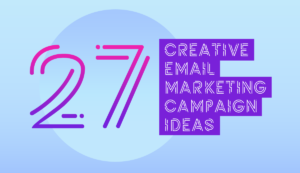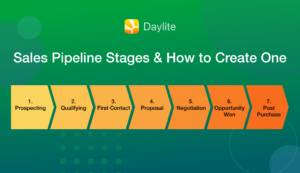There’s no question that email marketing is a valuable tool for small businesses. Email marketing helps keep your company at the front of the client’s minds and is a low-cost way to reach out to prospects.
But what happens if you’re not selling a product, but a service instead? Is email marketing something you should still consider? In this post, we’ll answer that question and a good few more besides.
Use Email Marketing as a Brand-Building Exercise
The primary difference between email marketing for a service business, and that of a business selling tangible products is that you need to focus more on brand-building with the former option. Product sales may be easier – after all, if you sell shampoo or similar items, they’ll need to be replaced periodically.
Also, with a product purchase, if something goes wrong, the item can simply be returned.
Services are a little trickier. There’s nothing that the client can touch and feel or even see in order to help them convince them they’re making the right decision. As a result, a service business is going to need to do more work in order to build trust.
If you’re willing to put in the time and effort to get it right, though, you’ll create a legion of loyal fans and brand ambassadors. That’s ideal because then they’ll refer business through to you and do a lot of marketing for you.
How to Make a Success of This Kind of Campaign
If you’re trying to win over the minds of your audience, blasting them with tons of sales messages is not going to cut it. You need to ensure that every communication that you send through is relevant, or risk getting accused of being a spammer.
As you’ll see from the EveryCloud infographic below, 66% of people will unsubscribe if they feel that marketing isn’t relevant to them. That means that the most important thing to do is to ensure that you target your messages more carefully.
Say, for example, that you’ve decided to send out an email about security awareness training tips. Now, that is more orientated towards businesses. So, business owners on your list would be a good fit. Tweak the message a little, and you could also make it relevant for the stay-at-home mom who wants to keep her kids safe online.
By dividing up your list into like sub-groups, you have a far better chance of your message hitting home. Better still, you start building up your cred with prospects because they feel as though you really understand them.
Tip: If you’re using a CRM like Daylite, you can segment your contacts by filtering your contacts for people that match a specific category type like “Lead” and Keywords such as “VIP” or “Interested in Service A”. Learn more on how to do that in this article.

Transcribed infographic:
Email Marketing
The single most effective tactic for turning your prospects into loyal customers.
In fact, 55% of companies generate more than 10% of sales from just sending emails.
So what is it all about?
On a daily basis, US consumers interact with about 11 brands through email, compared to 9 brands via Facebook and 8 brands via Twitter.
Total worldwide emails sent/received per day: 205.6B
Average % of spam in business emails:
13.64% (12B)
Average number of business emails received per day: 88B
How men and women use email
Conversions by gender and devices
Desktop: 62% male, 62% female
Phone: 25% male, 20% male
Tablet: 13% male, 18% female
*a conversion is any desirable action taken by the email recipient (email open, URL click, signup, purchase, etc)
More woman pay attention to marketing emails than men. 14% compared to 8%.
Woman spend 7 minutes more per month on a smartphone checking email compared to men. 17% compared to 10%.
More than 50% of men and women agree that humour is acceptable in an email.
Formal emails are authentic for more men than women.
On an average, men open more emails than women. 17.1% vs 14.2%.
74% of women prefer gender neutral marketing messages.
Email marketing performance
97% of businesses use email marketing to convert email recipients into buyers.
76% of subscribers make purchases from an email marketing message
66% of consumers unsubscribe from emails because they aren’t relevant to them.
69% of consumers delete emails from marketers because they get too many emails from them.
34% of consumers mark email marketing messages as spam.
72% of consumers delete emails from marketers that aren’t relevant to them.
Email marketing automation
58% of all top performing companies use marketing automation software to aid their marketing efforts.
Over 60% of marketers use mass email to connect with their customers.
Effects of email marketing on revenue
Up to 15% margin dollar increase by identifying serial comparison shopping customers and reengaging them.
50% increase in email revenues for trigger-based programs.
14% increase in category sales based on audience optimization strategies.
30% increase in gross return on ad spend for Facebook advertising.
Revenues driven by email types
36% targeted emails to specific segments.
18% activity-based triggers.
12% lifecycle-based triggers.
22% email to different segments of the whole list.
14% unscented email to the whole list.
Actions taken after receiving a commercial email
22% make purchases primarily online, but also occasionally in store over the phone.
12% make purchases equally online and in store or over the phone.
52% of recipients didn’t do any action after receiving a commercial email.
6% make purchases only in a store or over the phone
8% make purchases primarily in a store over the phone but occasionally online.
How to improve your CTR
Personalized email messages improve click through rate (CTR) by an average of 14% and conversions by 10%.
Emails with social sharing buttons see a 158% increase in CTR.
Saturday has the highest CTR at over 9% for consumer email campaigns.
CTR is higher when using the recipient’s first name in the subject line over no use of the first name.
6am has the highest CTR of any hour.
Email conversion rates by device
Tablet: 18.52%
iPad: 16.27%
Android Tablet: 2.12%
Kindle Fire: 0.13%
Desktop: 34.26%
Smartphone: 47.22%
iPhone 38.21%
Android Phone: 8.68%
Windows Phone: 0.16%
Blackberry: 0.01%
Other smartphone: 0.16%
Average open rate
Political email: 22.8%
Professional services email: 21.21%
Average click rate
Retail email: 2.38%
Professional services email: 2.75%
Email marketing ROI
1/3800 Email Marketing ROI
Every $1 spent on email marketing generates $38 in revenues.
60% of marketers use conversion rate sot calculate an email effectiveness.
18% of companies report an rOI of more than $76.
Email marketing ROI is 28.6% compared to only 7% for direct mail.
Revenue per email is $0.11.
29% of marketers look at ROI metrics to evaluate email effectiveness.
77% of ROI comes from segmented, targeted, and triggered campaigns.
Email on mobile devices
74% of smartphone owners use their devices to check their email.
Mobile makes the majority of email opens with 54%.
68% of Gmail and Yahoo opens come from mobile devices.
70% of consumers delete emails immediately that don’t render well on a mobile device.
69% of shoppers are influenced by company emails to make a purchase on a smartphone.
23% of users who open an email on a mobile device open it again later.
75% of Gmail’s 900M users access their accounts via mobile devices.
The iPhone is the most common mobile device subscribers use to open their email for the first time.
One out of every 3 clicks within an email occurs on a mobile device.
Mobile email open rate per industry type
Media and content distributers: 59%
Tourism, hotel and entertainment: 55%
Retail trade business: 53%
Insurance and financial companies: 52%
Foundations and NPO: 51%
The best time to send email
Mail schedule (% of emails sent)
Tuesday: 18%
Thursday: 17%
Monday: 17%
Wednesday: 16%
Friday: 15%
Sunday: 9%
Saturday: 9%
Email opens by time of day
Personalization helps to maximize customer engagement
Personalized emails deliver 6 times higher transaction rates.
Marketer see an average increase of 20% in sales when using personalized web experiences.
Emails with personalized subject lines are 26% more likely to be opened.
Only 39% of online retailers send personalized product recommendations via email.
Segmented and targeted emails generate 58% of all revenue.
74% of marketers say targeted personalization increases customer engagement.
How subject line effects open rate
Best open rates (60%-87%)
[COMPANY NAME] Sales & Marketing Newsletter
Eye on the [COMPANY NAME] Update (Oct 31-Nov 4)
[Company name] staff shirts and photos
[company name] may 2016 news bulletin
[company name] newsletter February 2016
Worst open rates (1%-14%)
Last minute gift we have the answer
Valentines shop early & save 10%
Give a gift certificate this holiday
Valentine’s Day Salon and Spa Specials
Gift certificates easy & elegant giving let them choose
Email marketing VS social network marketing
72% of people prefer to receive promotional content though email
VS
17% prefer receiving promotions content via social media
Email open rates usually start at about 16% VS Facebook reaches just 2-6% of page fan.
66% of online consumers make a purchase as a result of an email marketing message VS Facebook and Twitter make up just 0.2% of the number of messages sent each day.
Reasons clients marked you as spammer
Spam words in subject line:
Percent off
Make money
Collect
Clearance
Claim
45.8%: You email too often
36.4%: I didn’t subscribe
31.6%: Irrelevant content
10.4%: Email was impersonal
18.6%: Other reasons
Common email marketing mistakes
Segmented campaign have an average of 14.4% better open rate than non-segmented.
Triggered email messages have 71% higher open rates and 102% higher click rates than non-triggered.
43% of email recipients click the spam button because of unknown sender.
Trends over the next 5 years from email marketing experts
53% expect the increase of automation
76% expect the increase of personalization
85% expect the increase of integration with other marketing channels
Growth expectations on average accounts per user:
From 1.7 in 2015 to 1.9 in 2019 with total amount of 5.594 million accounts.


